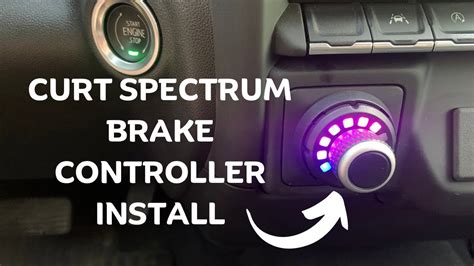Brake Controller Settings: A Quick and Easy Guide
Towing a trailer requires more than just hooking it up and hitting the road. A crucial element for safe towing is properly configuring your brake controller. This device helps you control your trailer brakes, ensuring safe and controlled stops, especially in emergency situations. This guide will walk you through understanding and adjusting your brake controller settings.
What is a Brake Controller?
A brake controller is an electronic device that connects your vehicle's braking system to your trailer's braking system. It allows you to apply the brakes to your trailer proportionally to the braking force applied to your tow vehicle. Without a properly functioning brake controller, stopping distances dramatically increase, significantly increasing the risk of accidents. Different controllers offer varying features and levels of adjustability, but the fundamental principles remain the same.
Understanding Key Brake Controller Settings
Most brake controllers feature several key settings that need adjusting for optimal performance. These usually include:
-
Gain: This is arguably the most important setting. Gain determines the responsiveness of your trailer brakes. A higher gain setting means your trailer brakes will engage more quickly and forcefully when you apply your vehicle's brakes. A lower gain setting results in a slower, gentler brake application. Finding the right gain is crucial for safe and comfortable towing.
-
Manual/Proportional: Some controllers offer a manual setting, allowing you to manually apply trailer brakes using a separate lever or dial. Proportional settings automatically adjust the braking force based on your vehicle's braking force. Proportional is generally recommended for safer and more consistent braking.
-
Inertia: This setting helps to compensate for the inertia of the trailer. Inertia is the tendency of an object to resist changes in its state of motion. A higher inertia setting can help prevent trailer sway and jackknifing, particularly when braking on inclines or during sudden stops. However, too high a setting can cause jerky braking.
How to Adjust Your Brake Controller Settings
Adjusting your brake controller settings is a process of trial and error, and safety should always be your top priority. Always adjust your settings in a safe, open area away from traffic.
-
Start Low: Begin with the gain setting at its lowest level.
-
Test in a Safe Environment: Find a safe, empty area (like an empty parking lot) where you can safely test your brakes. Apply your brakes gradually and observe how your trailer responds.
-
Gradually Increase Gain: If the trailer brakes don't engage sufficiently, gradually increase the gain setting. Repeat the braking test after each small adjustment.
-
Fine-tune: Continue this process, adjusting the gain until you achieve a smooth, controlled stop without excessive trailer sway or jerky braking.
-
Adjust Other Settings: Once the gain is properly set, you can experiment with other settings like inertia, depending on your controller's capabilities and your towing situation.
How do I know if my brake controller is working correctly?
A properly functioning brake controller should provide a smooth, progressive braking action without excessive trailer sway or lock-ups. If your trailer brakes are engaging too forcefully or too late, it's a sign that the gain setting needs adjustment. If the trailer brakes are unresponsive, you might have a malfunctioning controller or a problem with your trailer's braking system. Always consult your controller's manual and, if necessary, a qualified mechanic.
What are the common problems with brake controllers?
Common problems include faulty wiring, low battery voltage, incorrect gain settings, and damaged brake controller components. Regular inspections and maintenance are key to preventing issues.
How often should I check my brake controller settings?
You should check your brake controller settings before each towing trip and anytime you change your towing setup (e.g., changing trailers). Consistent checking helps ensure safe and reliable braking throughout your journey.
What should I do if my trailer brakes are locking up?
If your trailer brakes are locking up, immediately reduce the gain setting on your brake controller. Locking brakes can cause accidents. If the problem persists, have your brake controller and trailer braking system inspected by a professional.
By following these guidelines and understanding your brake controller settings, you can ensure safe and confident towing experiences. Remember, safety should always come first. If you are unsure about any aspect of setting up or using your brake controller, consult your owner’s manual or a qualified professional.

